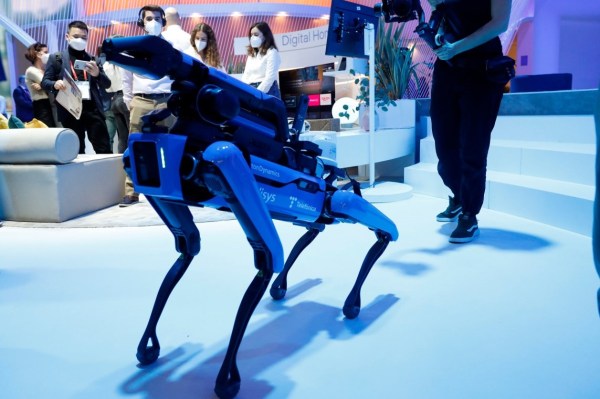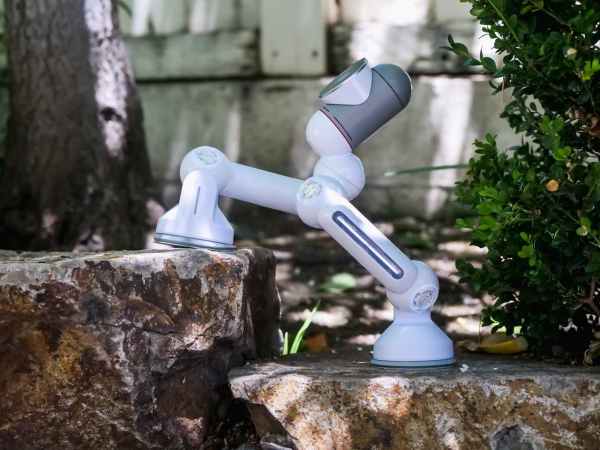Robotics and automation technologies, key pillars of Industry 4.0, are also being used for an assistive purpose: they are making life easier for people with disabilities, making the world around them more accessible. These advances not only give them independence and autonomy, but also help to reduce social stigma.
Assistive robotics ranges from exoskeletons and smart wheelchairs to rehabilitation machines and bionic limbs, among many other applications. Some are still in their infancy, and while it opens up opportunities, it also presents challenges. The UN itself highlighted its potential to reduce inequalities at the last Global Summit on Artificial Intelligence for Good in Geneva, Switzerland. Here are some of the recent innovations in robots and technologies in the service of disability.
Exoskeletons to aid walking and rehabilitation processes
Also known as robot suits or motorised armours, they adapt to the body’s movements through intelligent algorithms. They are available for the whole body or for the limbs. These exostructures replace lost functionality, treat musculoskeletal problems, help physiotherapists with patients suffering from motor and cognitive disabilities, and exercise the locomotion of hospitalised patients.
In Spain, the Spanish National Research Council (CSIC) has been conducting research in this field for the last 20 years, in gait neurorehabilitation and neuroprosthetics. Within this organisation, the engineer Elena García Armada is a pioneer in exoskeletons for children, work for which she has received the European Inventor Award 2022. Now, they are researching with CP Walker 2.0, an exoskeleton for posture correction during walking in children with cerebral palsy, Discover2Walk, a device aimed at children from 1 to 3 years old, and Exo-H3, a wearable device that adjusts to the legs, legs and hips, among several other exoskeletons.
Bionic limbs or prosthetics
3D printing is helping to make assistive devices that meet the needs of disabled people, such as prosthetic limbs. And robotics coupled with Brain Computer Interface (BCI) has led to bionic hands, arms and legs that connect to nerves. The most innovative ones already transmit sensations, such as the cold and warmth of objects touched with the MiniTouch robotic hand.
For the development of the most advanced bionic legs, their creator, Hugh Herr, a two-legged amputee from a climbing accident and bionics expert at MIT (Massachusetts Institute of Technology), received the 2016 Princess of Asturias Award for Technical and Scientific Research. He is now working on the next generation of bionic prostheses, such as a new interface for connecting bodies to prosthetic devices based on small magnetic implants (magnetomicrometry).
Devices for visual and hearing impairment
A robotic hand, designed to speak in sign language, is also helping people with deafblindness. The prototype is called Tatum T1 and is able to translate English texts, from an email, a book or the internet, into this visual and gestural language. Thanks to robotics and other technologies, blind and deaf people can drastically improve their daily lives.
The first robotic guide dogs are in full development. They detect spaces and move autonomously, identifying people and avoiding obstacles using technologies such as lidar, IoT sensors and artificial intelligence. Among them is the one promoted by the CSIC’s Institute of Physical and Information Technologies (ITEFI), called Tefi after the centre’s acronym. A Brazilian engineer has created Lysa, also for the same purpose of moving around safely. Both promise to become a cheaper alternative to real guide dogs.
Researchers at Stanford University are developing the Augmented Cane, a smart cane equipped with sensors, a lidar system, GPS, a camera and an acceleration and speed meter. Its operation is based on the same algorithm as autonomous driving vehicles.
Autonomous vehicles
Autonomous cars are technologically a reality, and experts hope that they will also be a reality for people with visual impairments, with the integration of audio, haptics (tactile feedback) and gestures that the vehicle recognises, according to a study that proposes designing this type of car from the outset with inclusion and accessibility criteria.
To move around without the need for other people more easily and safely, smart wheelchairs add functions that electric wheelchairs do not. For example, obstacle and pedestrian detection, fall notification, automatic lighting, stair-climbing wheels or autonomous driving.
The University of Michigan has a project researching the Vulcan autonomous system. The Hong Kong University of Science and Technology is also working on the construction of self-guided vehicles: on the one hand, it has designed a wheelchair that goes up and down stairs. On the other hand, it is developing one with a navigation system similar to that of autonomous vehicles, among other features.
Intelligent walkers for people with reduced mobility, robotic repositioning cameras, machines capable of dressing people, hair washers, feeders, robots that transfer people, for example, from a wheelchair to a bed, and many more assistive robots improve the lives not only of people with disabilities, but also of their carers.











